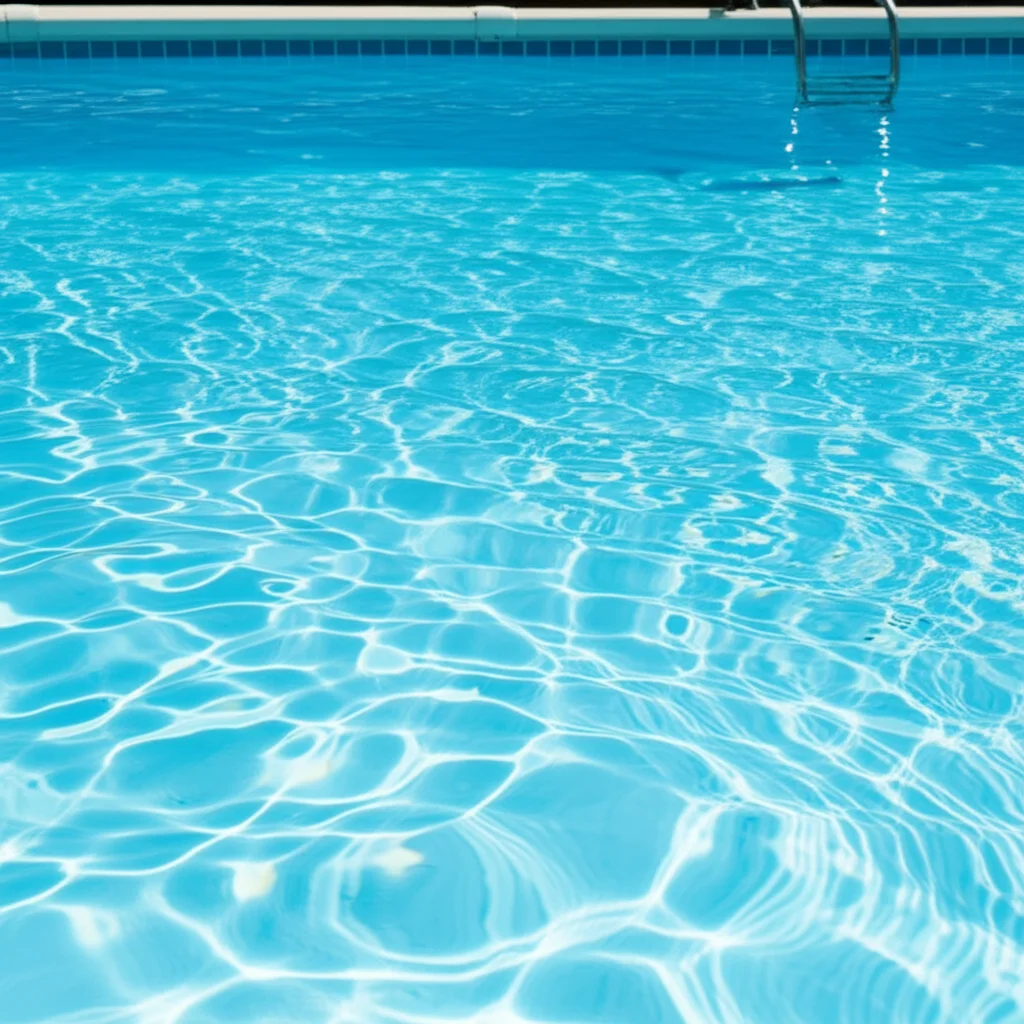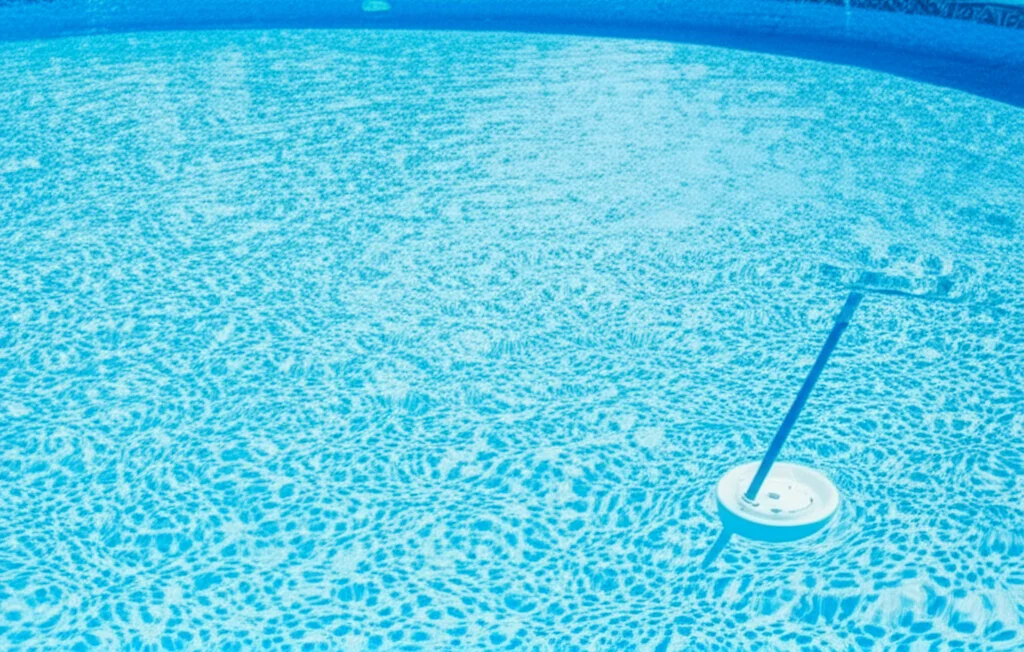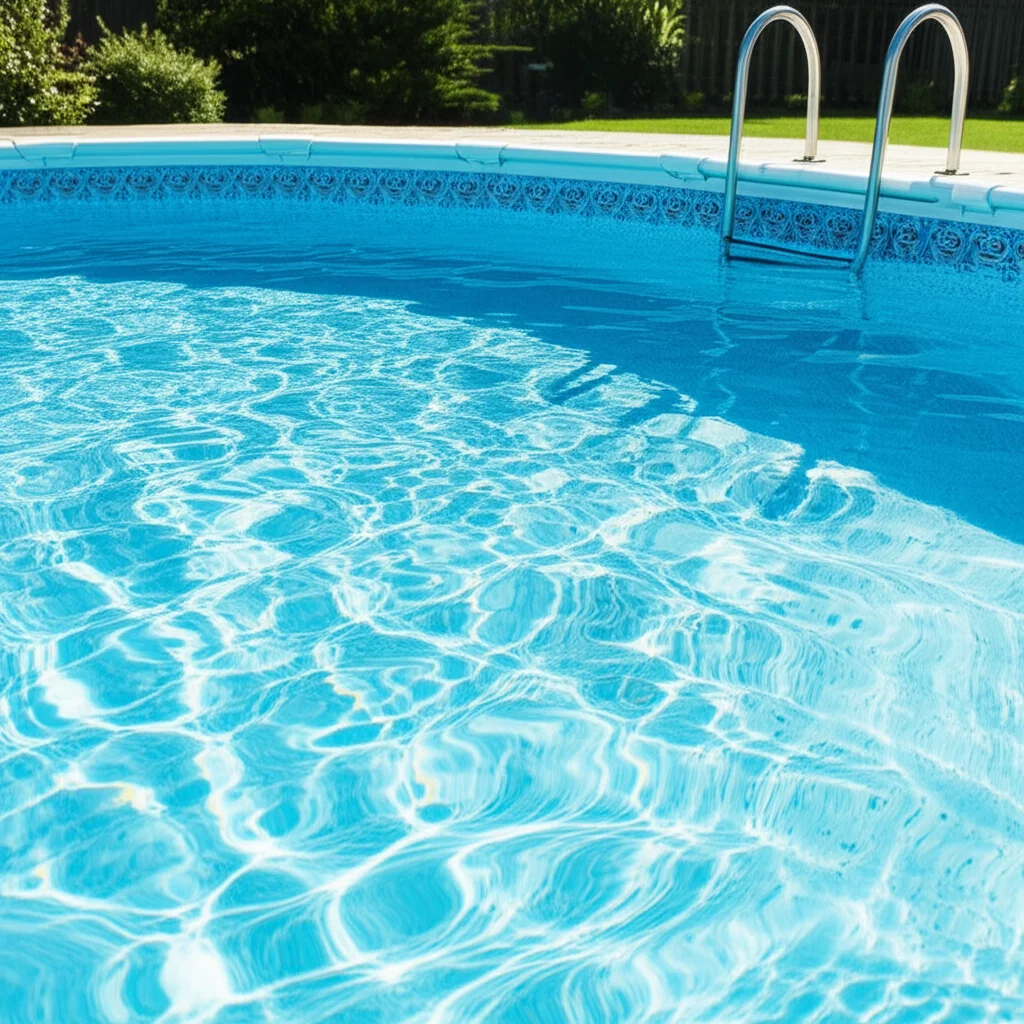· Todd Martin · Pool Maintenance · 20 min read
How To Clean Hayward Salt Cell

Restore Your Pool: How to Clean a Hayward Salt Cell
Having a sparkling clean pool often feels like a full-time job. For owners of saltwater pools, the Hayward salt cell is a vital component. This device converts salt into chlorine, keeping your pool sanitized. Over time, calcium scale and other deposits build up on the cell’s plates. This buildup reduces the cell’s efficiency and shortens its lifespan. Cleaning your Hayward salt cell regularly is not just a suggestion; it is a necessity for a healthy pool. I understand the frustration when your pool water suddenly looks cloudy or your chlorine levels drop. Often, a dirty salt cell is the reason. This guide will walk you through the precise steps to clean your Hayward salt cell, ensuring your pool stays clear and enjoyable. You will learn what supplies you need, how to perform an acid wash safely, and how to maintain your cell for long-term performance.
Takeaway
Keeping your Hayward salt cell clean ensures efficient pool sanitization.
- Inspect your salt cell regularly for calcium buildup.
- Always use appropriate safety gear when cleaning with acid.
- A diluted muriatic acid solution is the most effective cleaning agent.
- Rinse the cell thoroughly after cleaning to prevent damage.
- Proper pool chemistry prevents excessive future scaling.
To clean a Hayward salt cell, first turn off the pool power. Disconnect and inspect the cell for visible scale. Prepare a diluted muriatic acid solution (one part acid to four parts water). Soak the cell’s plates in this solution until the scale dissolves, then rinse thoroughly with a garden hose before reinstallation.
Understanding Your Hayward Salt Cell and Why Cleaning Matters
Your Hayward salt cell is the heart of your saltwater chlorine generator system. This system creates chlorine from salt in your pool water. Inside the cell are titanium plates with a special coating. An electrical charge passes through these plates, which converts dissolved salt into chlorine gas. This gas then sanitizes your pool water. Without this process, your pool would quickly become green and unhealthy.
Over time, minerals in your pool water, especially calcium, attach to these plates. This creates a hard, white deposit known as calcium scale. Think of it like hard water stains in a shower, but much more problematic. This scale acts as an insulator. It blocks the electrical current from reaching the plates. When this happens, the cell cannot efficiently convert salt into chlorine. Your pool’s chlorine output drops significantly. You might notice your pool water becoming cloudy, or algae starting to grow. I’ve seen pools struggle because their salt cells were neglected. Regular cleaning removes this scale. This allows the cell to operate at its full potential. It extends the life of your expensive salt cell. It also keeps your pool water clean and clear with less effort from you. Skipping this vital maintenance step leads to poor water quality, higher chemical costs, and eventually, the need to replace your cell much sooner. Regular cleaning is a simple way to protect your investment and enjoy your pool. You might be surprised how much easier maintaining a salt water pool becomes when you understand how to clean your salt water pool components properly.
Signs Your Hayward Salt Cell Needs Cleaning
Knowing when your Hayward salt cell requires attention saves you time and money. Your pool system often gives clear signals when the cell is struggling. I always tell pool owners to watch for these common indicators. Ignoring them can lead to significant issues. The first and most obvious sign is reduced chlorine output. Your pool water might start to look hazy, or you may notice algae beginning to form. This happens even if your salt levels are correct and the generator is running. The cell simply cannot produce enough chlorine because of scale buildup.
Another critical indicator comes directly from your Hayward system. Many Hayward salt chlorine generators have an “Inspect Cell” or similar light. This light illuminates when the system detects low flow, low salt, or, most commonly, a buildup on the cell plates. Do not ignore this light. It is your system’s way of telling you that the cell needs attention. You might also notice higher “cell volts” or lower “cell amps” readings on your control panel. These readings indicate increased resistance inside the cell, which is often caused by scale.
Visual Inspection Tips
You can perform a quick visual check yourself. Turn off your pool pump and disconnect the salt cell from the plumbing. Look inside the cell at the titanium plates. If you see white, flaky, or crusty deposits on the plates, your cell needs cleaning. A light film might not require immediate action, but significant buildup demands cleaning. These deposits are calcium scale. They prevent the salt-to-chlorine conversion process. I regularly inspect my own cell every few months during peak season. This helps me catch issues before they become major problems.
Performance Indicators
Beyond visual checks, monitor your chlorine levels. If your Free Chlorine (FC) drops consistently despite the generator running at a high percentage, a dirty cell is likely the culprit. Also, observe the “run time” of your generator. If it needs to run longer and longer to maintain chlorine, the cell is not performing efficiently. This means it needs to be cleaned. A clean cell ensures consistent chlorine production. It helps maintain the proper chemical balance in your pool. You want your pool to be clean and inviting, not struggling with poor water quality.
Gathering Your Cleaning Supplies for a Hayward Salt Cell
Before you start cleaning your Hayward salt cell, make sure you have all the necessary supplies ready. Safety is the most important consideration when handling chemicals. I always emphasize this first. You will be working with muriatic acid, which is a strong chemical. Protect yourself.
First, you need safety glasses or goggles. Muriatic acid can cause severe eye damage if it splashes. Next, wear acid-resistant gloves. Standard household rubber gloves are usually sufficient, but specialized chemical gloves offer better protection. I personally use thick, elbow-length gloves for extra peace of mind. Also, consider wearing old clothes or an apron. This protects your skin and clothing from accidental splashes.
For the cleaning solution itself, you will need muriatic acid. This is readily available at most hardware stores or pool supply stores. Always purchase fresh acid for best results. You will also need a large plastic bucket or container. Make sure this container is dedicated for pool chemicals and not used for anything else. It must be able to hold the salt cell upright. Avoid using metal containers as the acid will react with them.
A garden hose with a strong spray is essential for rinsing the cell thoroughly. You might also want a non-metallic brush (like a soft plastic brush) to gently scrub any stubborn deposits if needed, but usually, soaking is enough. Some Hayward salt cell models come with a specific cleaning stand or cap that seals one end of the cell. If you have one, use it. It makes the cleaning process much easier and safer by providing a sealed container for the acid solution. If you do not have a cleaning stand, you can improvise with a bucket and caps, but be very careful to prevent leaks. Having all these items ready before you begin ensures a smooth and safe cleaning process. Remember, preparation is key to a successful cleaning session.
Step-by-Step Guide to Cleaning Your Hayward Salt Cell (Acid Wash Method)
The acid wash method is the most effective way to clean a Hayward salt cell. It dissolves calcium scale without damaging the cell plates. Follow these steps carefully to ensure safety and effectiveness.
Disconnecting and Initial Inspection
- Turn Off the Pool Pump and Power: This is the most critical first step. Locate the breaker for your pool pump and turn it off. Ensure the power to your entire salt chlorine generator system is off. You do not want any electrical current running while you handle the cell. Safety is paramount here.
- Disconnect the Salt Cell: Your Hayward salt cell is typically installed in the return line after the filter and heater. It will have two unions or collars that connect it to your pool plumbing. Unscrew these unions. If your cell has a cable, disconnect it from the control box. Be careful not to lose any O-rings. The cell will still contain some water. I usually hold it upright as I carry it away to minimize spills.
- Inspect the Cell: Once disconnected, look inside the cell. Observe the titanium plates. Note the amount and thickness of the white, crusty calcium scale. This visual check helps you determine how long the cleaning process might take.
Preparing the Acid Solution Safely
- Gather Supplies and Safety Gear: Put on your safety glasses and acid-resistant gloves. Ensure you are in a well-ventilated area, preferably outdoors.
- Prepare the Cleaning Solution: You will use a diluted muriatic acid solution. The standard recommendation is a 1 part muriatic acid to 4 parts water ratio. This means for every one cup of acid, you add four cups of water.
- Always add acid to water, NEVER water to acid. This rule prevents a dangerous chemical reaction that can cause splashing and heat.
- Pour the required amount of water into your plastic bucket first. Then, slowly and carefully add the muriatic acid to the water. Do this gently to avoid splashes.
- For example, if you need 5 gallons of solution, add 4 gallons of water first, then slowly pour in 1 gallon of muriatic acid.
- Ensure the solution volume is enough to submerge the cell plates completely.
The Soaking and Rinsing Process
- Submerge the Salt Cell: If you have a Hayward cleaning stand or cap, attach it to one end of the cell. Stand the cell upright. Carefully pour the prepared acid solution into the cell until the plates are fully submerged. If you are using a bucket, place the cell into the bucket and pour the solution around it, making sure all plates are covered.
- Allow to Soak: You will see fizzing and bubbling as the acid reacts with the calcium scale. This is normal. Let the cell soak. The duration depends on the amount of scale.
- For light scale, a 15-30 minute soak might be enough.
- For heavy scale, it could take several hours. Do not let it soak overnight.
- Do not use a metal brush or tool to scrape the plates. This can damage the delicate coating. The acid will do the work.
- I often check it every 15-20 minutes. If the fizzing stops but scale remains, you might need a fresh batch of acid solution.
- Rinse Thoroughly: Once the fizzing stops and the scale is gone, carefully pour out the acid solution into a proper disposal area. Never pour it back into your pool or directly into stormwater drains. A utility sink is usually acceptable, or a bucket that can be diluted further and disposed of in an appropriate drain.
- Immediately after, use your garden hose to thoroughly rinse both the inside and outside of the salt cell.
- Rinse for several minutes to ensure all acid residue is removed. Acid left on the plates can damage the cell. I rinse until I no longer smell any acidic fumes.
- You can also fill the cell with water, cap both ends, shake, and empty several times to ensure all acid is neutralized and flushed out.
After these steps, your Hayward salt cell should be clean and ready for reinstallation. This process ensures the cell operates efficiently and prolongs its service life. This cleaning method is similar to how you might use vinegar for general cleaning, but much stronger. For instance, like when you clean mold with vinegar or when you clean your shower with vinegar, the acid solution here is actively dissolving deposits.
Alternative Cleaning Methods and When to Use Them
While the muriatic acid wash is the gold standard for cleaning Hayward salt cells, some alternative methods exist. However, they are generally less effective or carry their own risks. Understanding when these alternatives might be considered is important.
Pressure Washing: Some people attempt to pressure wash their salt cells. I strongly advise against this. While a light spray might dislodge very loose, superficial debris, pressure washing carries a significant risk. The high pressure can damage the delicate coating on the titanium plates. This coating is crucial for the cell’s function. Damage to it can permanently reduce the cell’s lifespan and efficiency. I have seen too many cells ruined by this method. Use pressure washing only as a last resort for extremely minor, non-calcium related blockages, and with very low pressure settings.
Baking Soda and Vinegar for Very Minor Film: For an absolute minimal film, not hard scale, a mixture of baking soda and vinegar might be considered. You might use this method for general household cleaning, like when you clean with vinegar and baking soda. However, this method is largely ineffective against calcium scale. Calcium scale requires an acid strong enough to dissolve it. The acetic acid in vinegar is too weak for significant mineral deposits. I only recommend this for very light, non-mineral staining, which is rare for salt cells. It is more of a “last resort before acid” for someone very hesitant about chemicals. It won’t remove the typical white crust.
Commercial Cell Cleaners: Several commercial salt cell cleaning solutions are available on the market. These products are often formulated to be less corrosive than muriatic acid, but still effective against calcium. They typically contain phosphoric acid or other safer acid blends.
- Pros: Generally safer to handle than muriatic acid, often come with built-in caps or cleaning stands.
- Cons: Can be more expensive than muriatic acid. Some may require longer soaking times. I find these commercial cleaners to be a good option for those uncomfortable with muriatic acid. Always read the instructions carefully. They are designed for this specific purpose and can be quite effective.
When to Use Alternatives: I only recommend alternative methods in very specific scenarios:
- For extremely minor, non-calcium film: A vinegar solution might suffice for quick rinsing, but not real cleaning.
- If you are extremely uncomfortable with muriatic acid: Commercial cleaners offer a safer alternative, though at a higher cost.
- Never for significant calcium scale: For any visible white, crusty deposits, muriatic acid is the most reliable and efficient method. Trying weaker solutions will waste time and potentially leave scale behind, leading to continued problems.
The primary goal is to remove calcium scale completely. Muriatic acid, used safely, remains the most proven and cost-effective way to achieve this. Just as you wouldn’t try to clean your pool without a vacuum if it’s very dirty, don’t try to clean a scaled cell with weak solutions.
Post-Cleaning Procedures and Reinstallation
Once your Hayward salt cell is sparkling clean and thoroughly rinsed, the job is not quite done. Proper post-cleaning steps are crucial for safety and system restart. I make sure to cover these steps with every pool owner I help.
Proper Rinsing and Drying
After the acid soak, rinsing is perhaps the most important step. You must remove all acid residue from the cell. Fill the cell with fresh water from your garden hose, swirl it around, and empty it. Repeat this process several times. I suggest rinsing for at least five minutes, flushing water through both ends. Any residual acid can damage the cell’s sensitive coating over time. After rinsing, allow the cell to air dry for a short period. This helps ensure no water drips back into the control box when you reconnect the cable.
Reconnecting the Cell
- Inspect O-Rings: Before reattaching the cell, check the O-rings on the cell’s unions. Make sure they are clean and free of debris. Apply a small amount of pool-grade silicone lubricant to the O-rings. This helps create a good seal and makes future disconnections easier.
- Reattach Unions: Carefully re-seat the salt cell into the plumbing. Align the unions and tighten them hand-tight. Do not overtighten with tools, as this can crack the plastic fittings. A snug, hand-tight connection is sufficient to prevent leaks.
- Reconnect Cable: Reconnect the electrical cable to the salt cell and then to the control box. Ensure the connection is secure.
System Startup and Monitoring
- Restore Power: Once the cell is securely reinstalled and all connections are tight, return to your breaker box. Turn the power back on to your pool pump and the salt chlorine generator.
- Check for Leaks: Immediately after turning the pump on, visually inspect the unions where the cell connects to the plumbing. Look for any drips or leaks. If you see a leak, turn off the pump, loosen the union, adjust the O-ring, and re-tighten.
- Monitor System: Check your salt chlorine generator’s control panel. The “Inspect Cell” light should now be off. If it remains on, re-check the cell for any remaining scale, or consider if the cell needs replacement. Monitor your pool’s chlorine levels closely for the next 24-48 hours. The system should now produce chlorine efficiently. Adjust the generator’s output percentage as needed to maintain your desired free chlorine level. A clean cell usually responds much faster and more consistently. I find that a properly cleaned cell makes pool maintenance much simpler. Just as you would carefully handle cleaning sediment from a well, careful attention to detail is key when dealing with your pool’s water system.
Maintaining Your Hayward Salt Cell for Longevity
Cleaning your Hayward salt cell is an important maintenance task. However, proper care extends beyond just periodic acid washes. Regular maintenance practices significantly increase the cell’s lifespan. They also ensure consistent chlorine production. I always recommend these habits to pool owners.
First, maintain proper pool chemistry. This is the single most important factor in preventing excessive scale buildup.
- Calcium Hardness (CH): Keep your CH levels within the recommended range, typically 200-400 ppm. High calcium levels directly lead to scale formation on the cell plates. If your CH is consistently high, consider using a sequestering agent. This helps to prevent calcium from precipitating out of solution and adhering to surfaces.
- pH Levels: Keep your pH between 7.4 and 7.6. High pH (alkaline water) encourages calcium to deposit. If your pH frequently drifts high, it will accelerate scale formation on your cell. Regular pH testing and adjustment are essential.
- Total Alkalinity (TA): Maintain TA between 80-120 ppm. This acts as a buffer for pH. Correct TA helps keep pH stable, which in turn reduces scaling.
- Cyanuric Acid (CYA): While not directly causing scale, proper CYA levels (30-50 ppm for saltwater pools) protect chlorine from sunlight. This means your generator does not have to work as hard, reducing wear on the cell.
Second, inspect your salt cell regularly. I suggest a visual inspection every two to three months during peak swimming season. If you live in an area with hard water, inspect it more frequently, perhaps monthly. Early detection of scale means a quicker, easier clean. You can catch light buildup before it becomes a major problem.
Third, adjust your salt cell’s output setting. Running your generator at 100% all the time can sometimes accelerate wear. If your pool only needs 60% output to maintain chlorine, setting it higher adds unnecessary stress. Fine-tune the output to meet your pool’s needs.
Fourth, consider a scale prevention product. These liquids, added to your pool water, bind with minerals like calcium. This keeps them dissolved and prevents them from forming scale on surfaces, including your salt cell. They are particularly beneficial in hard water areas.
Finally, winterize your salt cell properly. If you close your pool for winter, remove the salt cell. Clean it thoroughly. Store it in a dry, safe place where it won’t freeze. Freezing water inside the cell can cause cracks and damage. Following these maintenance tips will keep your Hayward salt cell working efficiently. It saves you money in the long run by avoiding premature cell replacement. Just like any crucial pool component, consistent care pays off significantly. Maintaining your pool’s balance is crucial, much like you would meticulously maintain the cleanliness of your salt water pool in general.
FAQ Section
How often should I clean my Hayward salt cell?
The cleaning frequency depends on your pool’s water chemistry and usage. In areas with hard water or if your calcium hardness is consistently high, you might need to clean it every 2-3 months. For softer water and balanced chemistry, once or twice a year, or when the “Inspect Cell” light comes on, is often sufficient. Regularly inspect the cell to determine its actual need.
Can I use anything other than muriatic acid?
While muriatic acid is the most effective and recommended solution, some commercial salt cell cleaners exist. These are generally safer but more expensive. Vinegar is too weak for significant calcium scale. Avoid pressure washing, as it can damage the cell’s coating. Always use a solution designed to dissolve calcium without harming the cell.
What happens if I don’t clean my salt cell?
Neglecting to clean your salt cell leads to calcium scale buildup. This scale reduces the cell’s efficiency, causing it to produce less chlorine. Your pool water may become cloudy or develop algae. The generator will work harder, leading to increased energy consumption and a significantly shortened lifespan for the expensive cell. Consistent cleaning prevents these issues.
Is cleaning a salt cell dangerous?
Cleaning a salt cell involves handling muriatic acid, which is corrosive. It can cause burns to skin and eyes, and its fumes can irritate the respiratory system. Therefore, it is crucial to wear safety glasses, acid-resistant gloves, and work in a well-ventilated area outdoors. Always add acid to water slowly, never the other way around. Following safety guidelines makes the process safe.
How do I know if my salt cell is bad and needs replacing, not just cleaning?
After a thorough cleaning, if your salt cell still fails to produce adequate chlorine, shows persistent “Inspect Cell” errors, or has visible damage like flaking coatings on the plates, it likely needs replacement. Your system’s control panel may also show very low amperage or high voltage readings, even when clean. Most cells last 3-7 years, depending on care.
Can I clean a brand new salt cell?
You should not clean a brand new salt cell. New cells are clean and free of scale. Cleaning is only necessary when calcium deposits begin to form on the plates. Unnecessary cleaning, especially with acid, could potentially damage the cell’s coating or reduce its effectiveness prematurely. Wait until you see signs of scale or reduced performance.
Conclusion
Keeping your Hayward salt cell clean is a fundamental aspect of maintaining a healthy and enjoyable saltwater pool. We covered the importance of understanding how your cell works and recognizing the signs that it needs cleaning, such as reduced chlorine output or the “Inspect Cell” light. We walked through the essential supplies for an acid wash, emphasizing safety every step of the way. The detailed, step-by-step guide on performing an acid wash provides a clear path to dissolving stubborn calcium scale effectively. While alternative methods exist, the acid wash remains the most reliable.
Remember, the process does not end with cleaning. Proper reinstallation and vigilant post-cleaning monitoring are vital. Furthermore, adopting consistent maintenance practices, especially balancing your pool’s chemistry, will significantly extend the life of your Hayward salt cell and prevent future heavy scale buildup.
By following these guidelines, you ensure your chlorine generator runs at peak efficiency. This keeps your pool sparkling clean and minimizes the need for costly replacements. Take charge of your pool’s health today; a clean Hayward salt cell is a key step towards a crystal-clear swimming experience. Your pool will thank you for it!





